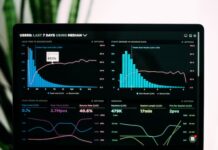The retail landscape, which is challenging even in the best of times, has vastly increased in complexity, volatility and unpredictability in the past decade. Throw in the whiplash effects of the global pandemic – intensely price-sensitive shoppers, disrupted supply chains, an unprecedented shift to online channels – and retailers are faced with a stark reality: nothing they could historically rely on as a foundation for pricing, promotion and markdown decision-making is still standing.
Fortunately a clear path forward exists for retailers who embrace the power of science-driven full-lifecycle pricing to better automate pricing processes for agility, responsiveness and relevance to shoppers. Let’s explore three traditional concerns retailers express when they explore price optimization – and why they are outdated myths that can needlessly create decision delays and set retailers further behind their more innovative competitors.

Myth 1: Retailers are Resistant to Adopting Science-Based Price Optimization
Even as science-driven price optimization became pervasive in certain sectors such as travel and hospitality, many retailers were reluctant to embrace the technology. Some feared that shoppers would be suspicious of AI-based prices, while others feared that data-driven pricing might result in a mindless race to the bottom against aggressively priced competitors.
But as shoppers increasingly embrace online channels, they overwhelmingly express being comfortable with computer-generated pricing. The pandemic heightened shopper price sensitivity and made customers more likely to compare prices, with 37% of shoppers in a recent global shopper study saying that they are more likely to compare prices today than pre-pandemic [i]. In this environment, it’s critical that retailers tap science to make price recommendations based on accurate, timely insights into shopper demand signals in order to deliver prices that engage shoppers on the items where they pay most attention.
Retailers are increasingly focused on the ability to take humans out of key processes and rely on AI-powered automation and dynamic pricing – in fact, 60% of retailers say they are already focused on putting AI-powered pricing in place [ii]. Retailers who have already adopted such technologies can attest to the proven ROI as the software recommends aggressive prices to meet shopper expectations on Key Value Items (KVIs) – those items in the assortment where shoppers are most attentive to prices – while knowing where else in the assortment retailers can recover margin to meet business goals while maintaining their overall price image.
Myth 2: The Systems are Too Complex and Intimidating
While the science behind price, promotion and markdown optimization technology requires retail-savvy specialized data scientists, the tools themselves are increasingly modern, accessible and easy to use by retail pricing teams. Advanced solutions offer what-if scenario modelling so that price strategists can collaborate with category managers to accurately predict how shoppers will respond to recommended price changes. Retailers can easily set parameters to reflect business rules such as maximum range for price changes or staying within a given percentage of a competitor’s prices on select KVIs, as well as category roles to price as a traffic driver, loss leader, margin enhancer, etc.
In times of rapid change, retailers turn to proven, trusted science that has a strong real-world track record. With modern price optimization solutions having been in the market for 10-20 years, retailers prize their ability to keep current at a time when even long-stable KVIs are being upended. With the retailer study having found that 93% of retailers expect to re-assess KVIs in light of pandemic-driven shifts in price sensitivity, optimization science’s ability to surface current KVIs at any given moment is crucial.
Myth 3: It’s Difficult to Know How to Choose the Right Technology Partner
With73% of retailers in the national survey saying fear of technology and processes is NOT a barrier to implementing and leveraging science-based pricing, it was hard to guess why any would be hesitant to move forward decisively. But a response later in the study shines a bright light on a show-stopper for some retailers: 57% of retailers said uncertainty about assessing solution providers is a barrier to adopting science-based pricing. But with more than 20 years’ experience leading consulting teams and practices delivering retail solutions, I’ve seen how retailers successfully and meaningfully assess potential short-list providers when they evaluate the options. Some clear best practices emerge:
- Focus on providers with a strong proven history in your retail sector and engage with the retailer’s references. If you’re a grocer, make sure they have strong experience with other grocers. Ask for references in your vertical – and leverage them for meaningful conversations about their own price optimization journeys, both best practices and lessons learned.
- Look for a strong partnering mindset. At the end of the day, the person-to-person relationships between retailer and vendor are as important as the technology itself. Does the vendor attract and retain top talent with both technical chops and deep retail domain experience? Do their customers stay with them for 5, 10 years or more? Do they have systematic customer engagement through Customer Advisory Boards and Special Interest Groups to made retailer-aligned roadmap decisions and enable users to get the most value from the products? Is the post-sales organization designed to support long-term customer success for the retailer?
- Prioritize full pricing lifecycle capabilities and a clear product strategy. A strong partner will have a clearly defined and articulated product vision and roadmap, ideally focused on a holistic view of pricing from everyday prices through promotions, including trade deal management, and ultimately markdown and clearance. Even if your initial goal focuses on optimizing a single phase of the lifecycle, partnering with a full lifecycle partner enables incremental adoption that ultimately positions a retailer for maximum business impact in the long run.
At a time when shopper, competitor and market behaviours are evolving at dizzying speeds, retailers face an imperative to deliver carefully crafted prices and offers that entice shoppers. With modern optimization science, retailers can position themselves to deliver the elusive win-win: prices that attract shoppers on the items they care most about while recovering margin safely elsewhere to deliver healthy long-term business results.
https://www.demandtec.com/
[i] “Shopper Perceptions and Behavior in a Post-Pandemic World: Five Truths, No Lies,” May 2021, a global shopper study commissioned by DemandTec.
[ii] “Smart Pricing Strategies for the Post-COVID World,” a national retailer study commissioned by DemandTec, June 2020.

















